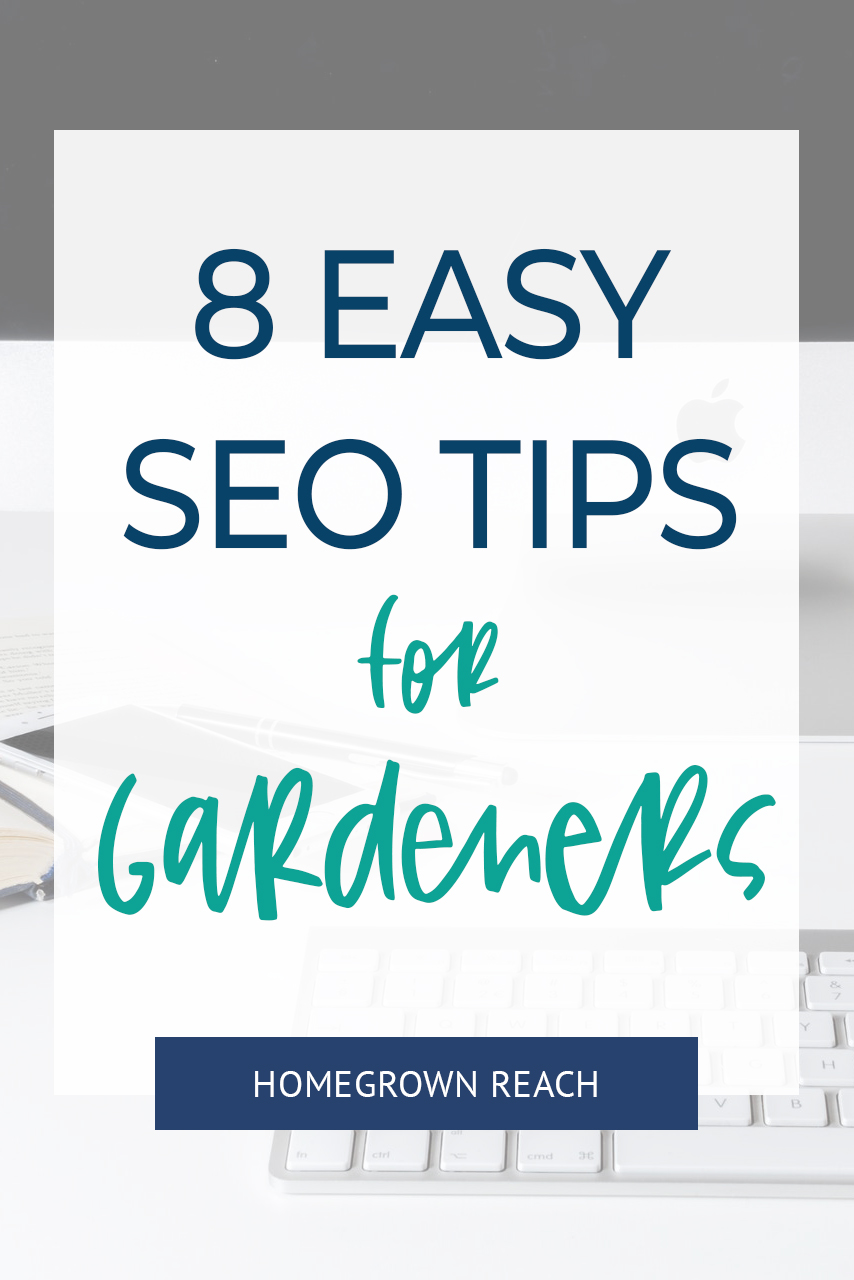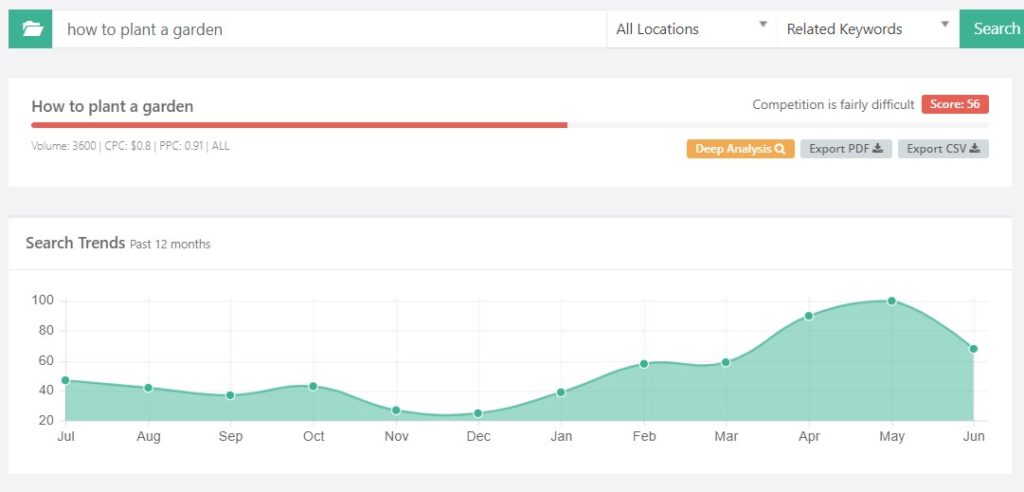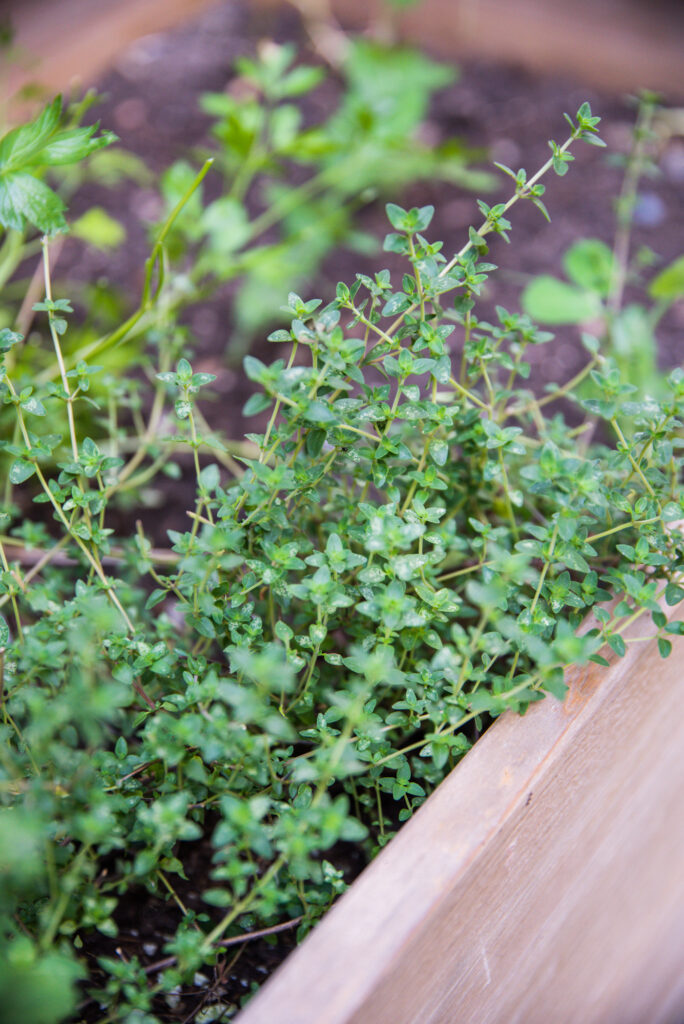Running (and growing) your own business comes with a lot of unexpected challenges and it can be hard to know what to focus your attention on. One of the challenges that is worth your time and energy is using SEO to enhance your website and ensure you rank well on Google. If reading that makes you feel a little bit bamboo-zled, don’t worry—this post covers tips on SEO for gardeners and gardening businesses to help your business bloom!
If you aren’t sure what SEO is, let me briefly explain: SEO stands for search engine optimization and it is exactly that—optimizing your website so you’ll rank well in Google for the keywords your ideal customer is searching for. It takes some intentional effort but once you begin planting the right seeds, you’ll see your inquiries start to grow and you can begin to reap the results!
So ready to get started? Here’s my 8 top tips for getting going with SEO for gardeners!

#1 Do your keyword research
Keywords are essentially the search terms that people use when looking for something on Google. They are the ideas, topics and phrases which define your content and allow search engines to discover what your website is all about in order to show it on search engine results pages (SERPs). You can do keyword research to find the best ones to target to improve the visibility of your website when you add them to your content. There are lots of free keyword research tools available to help you, and here are some of my favorites:
- Keysearch
- Ubersuggest
- Google Keyword Planner
- Ahrefs
- Moz
- SEMrush
Using these will allow you to see exactly what your potential customers are searching for, so you know the keywords to use in order to improve your chances of showing up!

#2 Optimize website copy
Any of the text you use across your website should be optimized in terms of SEO—this means including your keywords! Whether it’s on landing pages, product pages, sales pages, or in blog posts, keywords are what will help your site show up on Google. Blogs, for example, should be of a decent length (800 words is a good starting point) and written well—don’t churn out basic content just for the sake of it, but do your due diligence in terms of what people want to know!
This is where that keyword research comes in handy—and you are going to want to focus on long-tail keywords because they are going to create the most impact as they attract a targeted audience and have less competition. For example, instead of searching for “flowers,” a long-tail keyword would be something like “purple perennial flowers for shaded gardens.” Be sure to use your keywords naturally throughout your website copy or content and use them 1-5% of the total number of words to reinforce to Google what keywords you should be ranking for.
#3 Optimize title tags and meta descriptions
When you search for something yourself on Google, you’ll notice that the results have two things: title tags and a meta description. You might not know that this is what they’re called, but you will definitely have seen examples of them yourself. Optimizing these is an unbe-leaf-able SEO for gardeners tip!
Here’s an example of my website, Homegrown Reach:

Homegrown Reach | SEO for Gardeners, Florists & Family Farms — this is the title tag, letting you know what the page is. Be sure to incorporate your business name or the name of the page, but title tags are a ranking factor so you can optimize this by including your main keyword here.
The two sentences below make up the meta description: this is a short snippet showing Google (and your audience) what a website or specific webpage is about. Each page you create on your website should have its own relevant meta description.
#4 Track seasonal trends
Some content is evergreen—a term that you’re likely familiar with as a gardener—in the context of SEO this means it is useful all of the time and will likely be viewed for years to come. Other content is seasonal; it might be useful year after year, but it has a real time to shine during a certain point in the year.
You should track seasonal trends in terms of your business and in terms of Google searches. For example, what questions do customers ask you at certain times of year? Do they want to know when particular plants thrive or what sort of specific seasonal care they should be implementing? How early do people start planning their gardens for the spring? When do you tend to get a higher volume of visitors to your business or inquiries about your services?

Work with these trends to create content that more people are looking for! And make sure you publish any seasonal content 1-2 months before people are searching for it to give Google time to index and start ranking it.
#5 Write relevant content
Following on from tracking seasonal trends, if you are creating blogs (which I highly recommend!), social media content, or posts on Google Business Profile, you should ensure that your content is relevant to the season—there’s no point in writing about sunflowers when it’s snowing, for example.
This extends to writing content which makes sense in terms of where you’re based: if you want local customers, write about plants which will grow well in your local area. If it rains a lot in your location, there’s little point in writing about foxtail lilies for example—as they’re unable to survive in really soggy soil, your related content will suffer a drought.
#6 Use Google Business Profile
Google Business Profile (formerly Google My Business) is a really useful tool for SEO for gardeners. It’s completely free and allows you to control the way your business shows up in search and on maps by adding relevant information. It can help you get seen by more customers in your area who are searching on Google Maps, show off your glowing customer reviews, give potential customers a screenshot of who you are and what you offer, show your recent work or products, allows people to quickly ask questions, and so much more.

You can update it seasonally, too, to let potential customers know what services you’re offering right now or what plants your garden center has in stock! Ensure all of the information is correct and up to date in terms of your address, contact details, and opening hours. And all the information that you put on your page for potential customers will also be seen by Google, which can help them understand more about what your business should rank for!
#7 Track your data
Tools like Google Analytics and Google Search Console are perfect for gardeners looking to improve their SEO—and they’re free!
They can seem a bit daunting but once you get used to how these sites work, you’ll see that they offer an abundance of really important information about your site in terms of what keywords you’re ranking for, how people are finding your site, which pages get the most traffic, and more.
And once you have this information, you can leverage it to encourage people to buy or inquire about your business!
#8 Give it ‘thyme’
Implementing these SEO tips for gardeners doesn’t guarantee success overnight—you need to plant the SEO seeds and nurture them before you can start reaping the benefits of your hard work. Depending on things like your competition, how long your site has been live, and how often you’re creating quality content, it can take several weeks to a few months before you can start to see improvements in your rankings (which you can track in Google Search Console. So give it a bit of time and keep on going with all of this advice, even if you’re not seeing the results as quickly as you would like.

SEO for gardeners and garden centers doesn’t have to be hard, but if it sounds like it might kale your vibe and you want to focus on what you love doing, my SEO services can help. See how we can work together to help your business bloom!